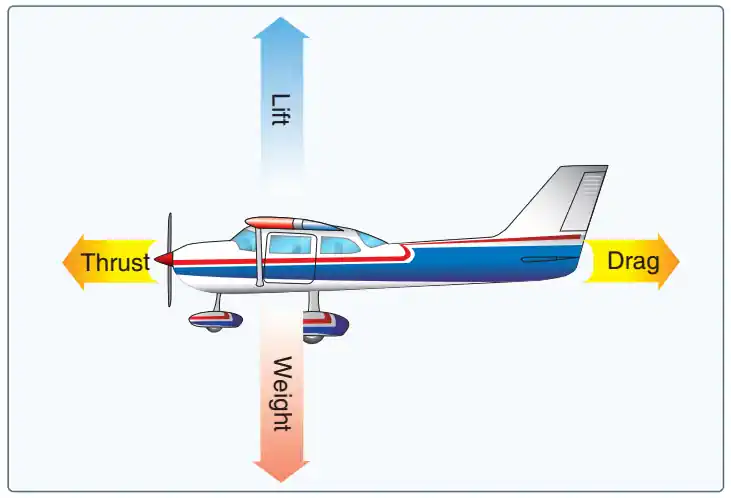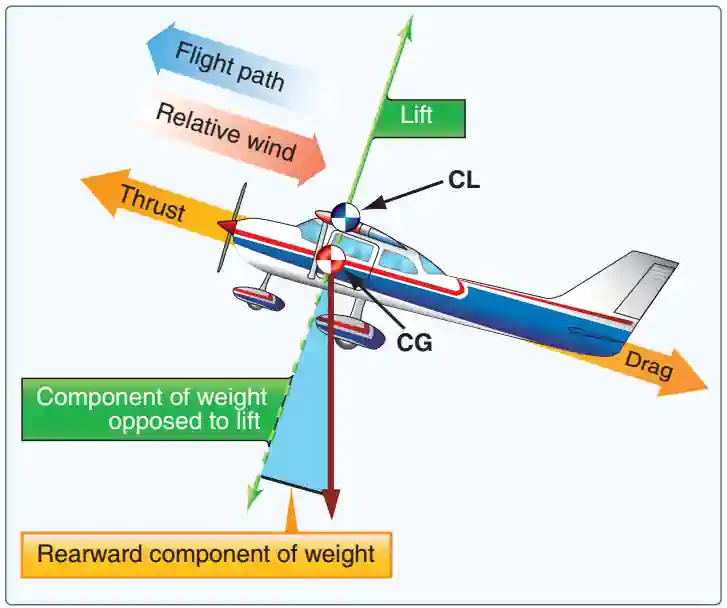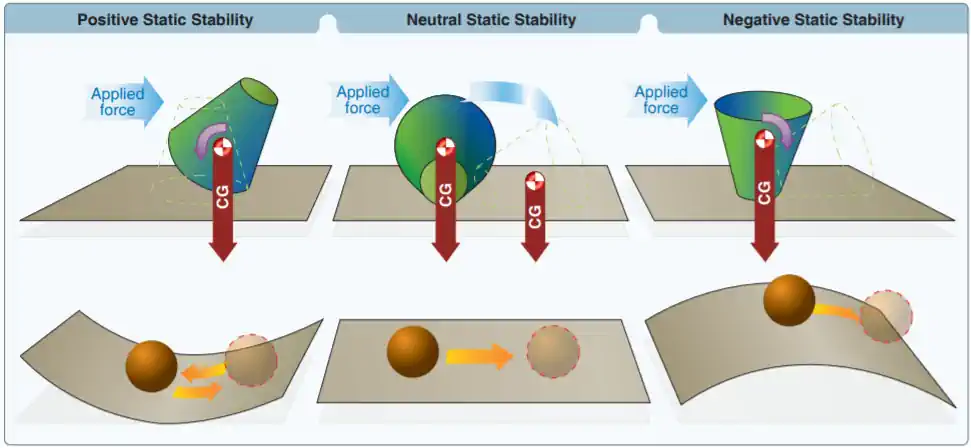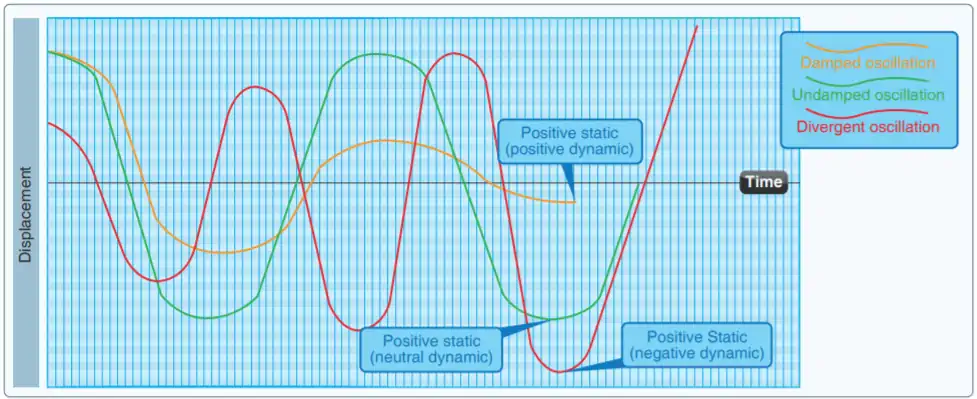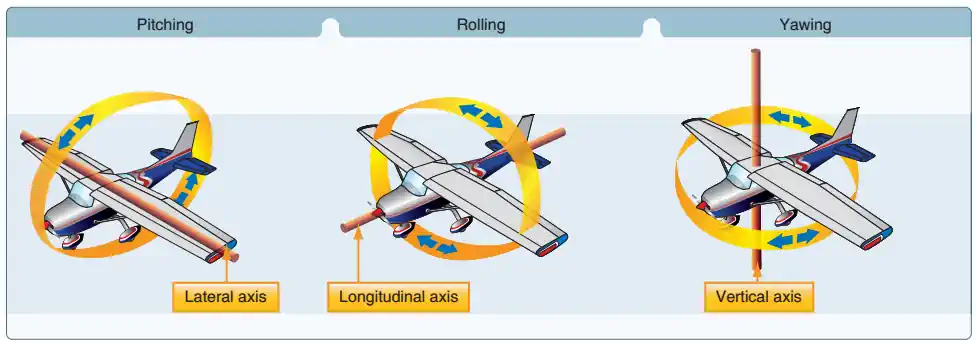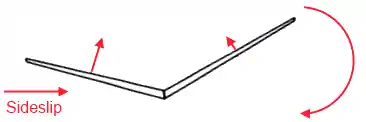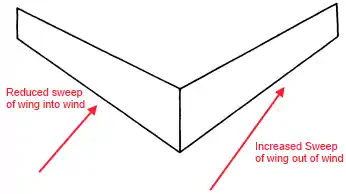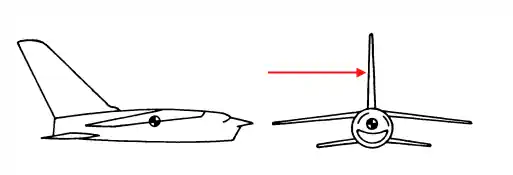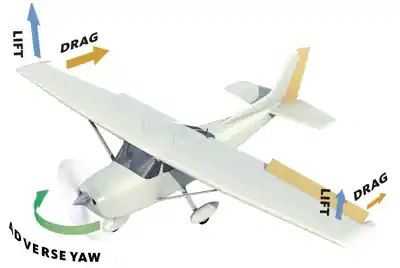Aircraft Stability
Aircraft designs incorporate various stability characteristics that are necessary to support the desired flight performance.
Introduction to Aircraft Stability
- Aircraft designs incorporate stability characteristics necessary to support the desired flight performance.
- Balanced flight demonstrates the desire for predictable flight performance, i.e., stability.
- Stability is an aircraft's ability to maintain/return to its original flight path.
- Allows aircraft to maintain uniform flight conditions, recover from disturbances, and minimize pilot workload.
- Aircraft are designed with positive aircraft static stability to support aircraft dynamic stability.
- Aircraft axes are imaginary lines that pass through the aircraft, thought of as pivot points.
- A few additional considerations, such as left-turning tendencies, maneuverability versus controllability, and adverse yaw, contribute to this discussion.
- Think you've got a solid understanding of aircraft stability? Don't miss the aircraft stability quiz below and the topic summary.
Balanced Flight
- In steady flight, the principles of flight demonstrate the relationship between forces acting upon an aircraft. [Figure 1]
- Thrust equals drag, and lift equals weight, but more appropriately stated:
- The sum of all upward components of forces (not just lift) equals the sum of all downward components of forces (not just weight).
- The sum of all forward components of forces (not just thrust) equals the sum of all backward components of forces (not just drag).
- This refinement addresses how, whenever the flight path of the aircraft is not horizontal, the lift, weight, thrust, and drag vectors break down into two components.
- Force vectors during a stabilized climb show that thrust has an upward component. [Figure 2]
- In glides, a portion of the weight vector is along the forward flight path and, therefore, acts as thrust.
Aircraft Static Stability
- Static stability in aviation refers to the initial tendency of an aircraft to return to its original position once disturbed.
- Static stability is either positive, negative, or neutral. [Figure 3]
-
Aircraft Positive Static Stability:
- Positive static stability refers to an aircraft's initial tendency to return to its original position when disturbed.
- If the pilot rolls an aircraft into a turn and then releases the controls, the aircraft initially tends to return to level flight.
-
Aircraft Neutral Static Stability:
- Neutral static stability refers to an aircraft's initial tendency to remain in a new position.
- If the pilot rolls an aircraft into a turn and the controls are released, the aircraft initially remains in that turn, neither rolling out nor becoming steeper.
-
Aircraft Negative Static Stability:
- The initial tendency to move away from the original position.
- If the pilot rolls an aircraft into a turn and the controls are released, the aircraft initially tends to continue rolling into the turn.
-
Aircraft Dynamic Stability
- Dynamic stability in aviation refers to an aircraft's ability to maintain stability over time.
- An aircraft must have positive static stability to have dynamic stability. [Figure 4]
-
Aircraft Positive Dynamic Stability:
- Positive dynamic stability is the tendency of an aircraft to trend toward its original position if disturbed.
- If the pilot rolls an aircraft into a turn and then releases the controls, the aircraft tends to return to level flight over time.
-
Aircraft Neutral Dynamic Stability:
- Neutral dynamic stability refers to an aircraft's tendency to maintain its position over time when disturbed.
- If the pilot rolls an aircraft into a turn and the controls are released, the aircraft remains in that turn over time.
-
Aircraft Negative Dynamic Stability:
- Negative dynamic stability is the tendency of an aircraft to trend away from its original position once disturbed.
- If the pilot rolls an aircraft into a turn and the controls are released, the aircraft tends to continue rolling into the turn over time.
-
Longitudinal Stability
- The longitudinal axis is an imaginary line running from the nose to the tail of the aircraft; motion about this axis is "roll," controlled by the ailerons.
- Longitudinal stability is the tendency of an aircraft to return to the trimmed angle of attack.
- Accomplished through elevators and rudders.
- Contributors:
- Straight wings (negative).
- Wing Sweep (positive).
- Fuselage (negative).
- Horizontal stabilizer (most significant positive).
- An aerodynamic center aft of the Center of Gravity (C.G.) is a stabilizing moment.
- An aerodynamic center forward of C.G. is a destabilizing moment.
Lateral Stability
- The lateral axis is an imaginary line running from wing tip to wing tip; movement about this axis causes the nose of the aircraft to rise or lower, achieved by moving the elevators.
- Lateral stability is the tendency of an aircraft to resist roll.
-
Dihedral Effect:
- Dihedral is evident when an aircraft rolls, creating a side slip (assuming no rudder).
- One of the wings is lower than the other, creating an angle of attack difference for each wing.
- The lower wing experiences an increase in the angle of attack, which causes it to create more lift and, therefore, rise, while the opposite is true for the higher wing. [Figure 5]
- The net result is the aircraft rolling away from the side-slip, thus resisting roll and attempting to bring the wings back to level.
- The use of the rudder will smooth the turn and overcome these forces, as well as others, such as adverse yaw.
-
Swept Wing Effect:
- Side-slips create more direct relative wind to the upwind swept wing, which creates a roll toward level. [Figure 6]
Vertical Stability
- The vertical axis is an imaginary line running from the top of the aircraft to the bottom of the aircraft.
- The rudder controls rotation about the vertical axis, also known as "yaw." [Figure 7]
- Tendency to resist yawing.
- The more surface area behind the C.G., the more directional stability.
-
Dutch Roll:
- Coupling of the lateral and directional axes causes Dutch roll.
- Dutch roll is a combined yawing-rolling motion of the aircraft, but it may only be a nuisance unless allowed to progress to large bank angles.
- Large rolling and yawing motions can become dangerous unless properly damped.
- The side-slip disturbance will cause the aircraft to roll to the side.
- The bank angle, in turn, causes a side-slip in the opposite direction.
- While not unstable, this continual trade-off of side-slip and angle of bank is uncomfortable.
- Dutch roll may be excited by rough air or by lateral-directional over-controlling.
- Once induced, normal aircraft stability dampens the effect.
- Poor Dutch roll characteristics may make the aircraft susceptible to pilot-induced oscillations (PIO).
- Lateral-directional PIO is most common when the pilot attempts to line up in the landing configuration.
Four Left Turning Tendencies
- Most general aviation engines rotate clockwise as the pilot would see it from the cockpit looking out the windscreen.
- The principles of p-factor, gyroscopic precession, torque, and slipstream result in a left-turning tendency in a clockwise rotating propeller.
- In those engines configured to rotate the propeller counterclockwise, these principles become right-turning tendencies.
-
P-factor:
- Also referred to as asymmetric loading.
- P-factor is a complex interaction between aircraft, relative wind, and rotational relative wind.
- The descending blade has a higher AoA and, therefore, increased thrust.
-
Gyroscopic Precession:
- Gyroscopic precession is the force applied (which moves a propeller out of its plane of rotation) that is felt 90° from that location, in the direction of rotation.
- Gyroscopic precession is more prevalent in tailwheel airplanes at lower airspeeds with high power settings (takeoff).
- In fact, this force is considered a right-turning tendency in tricycle gear aircraft.
- In a tailwheel plane, on the takeoff run, when the tail comes up, it will produce a left-turning tendency, as the top of the propeller is "pushed" forward and the bottom is "pulled" aft.
- When raising the nose for a climb, precession will produce a force to the right.
- When lowering the nose for descent, precession will produce a force to the left.
- The helicopter community also refers to gyroscopic precession as phase lag.
-
Torque:
- Torque is the force generated when the clockwise rotation of the blade forces the aircraft to rotate counterclockwise.
- It is greatest at low airspeeds with high power settings and a high angle of attack.
-
Slipstream:
- The corkscrew wind strikes the tail (rudder) on the left side.
Maneuverability vs. Controllability
- Maneuverability and controllability are conflicting concepts, and designers must balance these two for the aircraft.
- Nothing in aviation is free, and the price for higher lift is always higher drag.
-
Maneuverability:
- Maneuverability enables you to maneuver the aircraft easily and allows it to withstand stress.
- Dependent on:
- Weight.
- Flight control system.
- Structural strength.
- Thrust.
-
Controllability:
- An aircraft's ability to respond to control inputs regarding attitude and flight path.
Adverse Yaw
- An imbalanced drag between the wings, which causes a yaw moment on the aircraft opposite the direction of turn, is called adverse yaw. [Figure 8]
- Any time the ailerons move, adverse yaw occurs.
- When the outboard aileron deflects downward, lift on the outboard wing increases, and lift on the inboard wing decreases, which causes the airplane to roll.
- In a turn to the right, the right aileron is up, and the left aileron is down.
- In a turn to the left, the left aileron is up, and the right aileron is down.
- However, as a downward-deflected aileron increases the airfoil's lift, it also increases the drag.
- When the inboard aileron deflects down, lift and drag are increasing (more so on the outboard wing).
- The increased drag slows the outboard wing, necessitating rudder input in the direction of the turn to counteract the outboard wing's increased drag and prevent it from holding the wing back.
- With no rudder input, the nose will yaw outboard (to the outside of the turn) while rolling into the turn.
- The turn coordinator ball indicates this yaw by sliding to the inside of the turn.
- We refer to this as a slip.
- The rudder offsets the unequal drag of the wings created only when the ailerons deflect.
- Unbalanced drag only exists while the ailerons deflect and the airplane is in the act of rolling.
- Therefore, when the airplane is in a steady bank, the ailerons are neutral, so the lift and drag on the two wings are balanced.
- That being the case, the rudder generally isn't needed while actually in the turn.
- Also, since the airplane is in a steady-state condition (banked), generally, no aileron deflection is needed to maintain that condition.
- The farther out the wings are (ailerons), the more of a moment this drag will have.
Pilot Induced Oscillations
- Pilots who over-control an aircraft are said to have performed an induced oscillation.
- Factors that lead to oscillations include:
- Inexperience: general over-controlling.
- Slow scans: a control input correction remains in place longer than required, necessitating multiple subsequent corrections.
- Aircraft instability: difficulty managing an unstable aircraft in flight.
- Pilot-induced oscillations are most common on landings where an aircraft with too much energy may bounce or porpoise.
Aircraft Stability Knowledge Quiz
Aircraft Stability Conclusion
- Most general aviation aircraft, especially trainers, have positive static and positive dynamic stability.
- By utilizing the aerodynamic forces of thrust, drag, lift, and weight, pilots can maintain a controlled and safe flight.
- A balanced aircraft is a happy aircraft (fuel burn, efficiency, etc.).
- Why Adverse Yaw Matters:
- When you turn, the stall speed increases.
- If you're experiencing adverse yaw without having the correct amount of rudder input to counter it, then you are uncoordinated.
- If you become slow and uncoordinated with a higher stall speed, a spin could result.
- Considering only level flight and normal climbs and glides in a steady state, it is still true that lift provided by the wing or rotor is the primary upward force, and weight is the primary downward force.
- Left-turning tendencies are phenomena primarily affecting single-engine propeller aircraft.
- Although various forces act on jet aircraft during flight, left-turning tendencies generally remain negligible.
- Aircraft are more stable in right turns due to left-turning tendencies.
- See also: Wake Turbulence.
- Still looking for something? Continue searching:
Aircraft Stability References
- Federal Aviation Administration - Instrument Flying Handbook (2-11) Coordination of Rudder and Aileron Controls.
- Federal Aviation Administration - Pilot/Controller Glossary.
- Federal Aviation Administration - Pilot Handbook of Aeronautical Knowledge.
- Flight Training.aopa.org - Technique, The Basic Turn.
